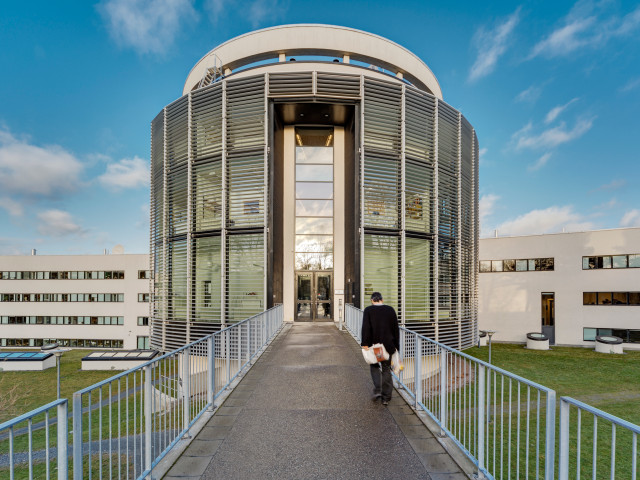- The basic ideas and concepts of quantum mechanics: Hilbert spaces, bra-ket formalism, operators, matrix representation, observables, the measurement process, uncertainty relations, the position and momentum representation, density matrices, Bell's inequalities.
- Quantum dynamics: temporal evolution, Schrödinger and Heisenberg picture, the propagator, path integrals.
- Harmonic oscillator, creation and annihilation operators.
- Symmetries in quantum mechanics: translation, rotation, parity, spatial and temporal inversion.
- The theory of angular momentum: ladder operators, spin, addition of angular momentum.
- Permutation symmetry, identical particles.
- Approximation methods for time-independent and time-dependent problems, the interaction picture.
SI2380 Advanced Quantum Mechanics 7.5 credits

"Advanced Quantum Mechanics" is a basic continuation course in quantum mechanics that aim at the applications of quantum mechanics. The course should give you deeper knowledge about the foundations of quantum mechanics and skills in problem solving in quantum mechanics.
Information per course offering
Information for Autumn 2026 TNTEM programme students
- Course location
AlbaNova
- Duration
- 24 Aug 2026 - 23 Oct 2026
- Periods
Autumn 2026: P1 (7.5 hp)
- Pace of study
50%
- Application code
50675
- Form of study
Normal Daytime
- Language of instruction
English
- Course memo
- Course memo is not published
- Number of places
Places are not limited
- Target group
- No information inserted
- Planned modular schedule
- [object Object]
- Schedule
Contact
Course syllabus as PDF
Please note: all information from the Course syllabus is available on this page in an accessible format.
Course syllabus SI2380 (Spring 2022–)Content and learning outcomes
Course contents
Intended learning outcomes
After completion of the course you should be able to:
- describe the formal structure of quantum mechanics.
- apply Dirac's bra-ket notation, and manipulate Hermitian and unitary operators in quantum mechanical derivations.
- describe in detail the time evolution of quantum systems, the propagator, and the Schrödinger and Heisenberg pictures.
- know the path integral formulation of quantum mechanics.
- calculate the expectation value of various physical quantities and how the measurement process works in quantum mechanics.
- solve the Schrödinger equation for various problems, such as the harmonic oscillator using algebraic methods.
- use statistical operators (density matrices).
- know something about quantum mechanics interpretations and Bell's inequalities.
- describe in detail the consequences of discrete and continuous symmetries and conservation laws.
- calculate different aspects of the angular momentum and spin, for example, addition of angular momentum.
- analyze systems consisting of identical fermions or bosons.
- describe the Aharonov-Bohm effect.
- apply the main approximation methods for stationary and time-dependent quantum mechanical problems.
Literature and preparations
Specific prerequisites
English B / English 6
Recommended prerequisites
Mathematical Methods in Physics.
Quantum Physics.
Literature
Examination and completion
Grading scale
Examination
- TEN1 - Examination, 7.5 credits, grading scale: A, B, C, D, E, FX, F
Based on recommendation from KTH’s coordinator for disabilities, the examiner will decide how to adapt an examination for students with documented disability.
The examiner may apply another examination format when re-examining individual students.
If the course is discontinued, students may request to be examined during the following two academic years.
Other requirements for final grade
A written exam (TEN1; 7,5 university credits).
Examiner
Ethical approach
- All members of a group are responsible for the group's work.
- In any assessment, every student shall honestly disclose any help received and sources used.
- In an oral assessment, every student shall be able to present and answer questions about the entire assignment and solution.